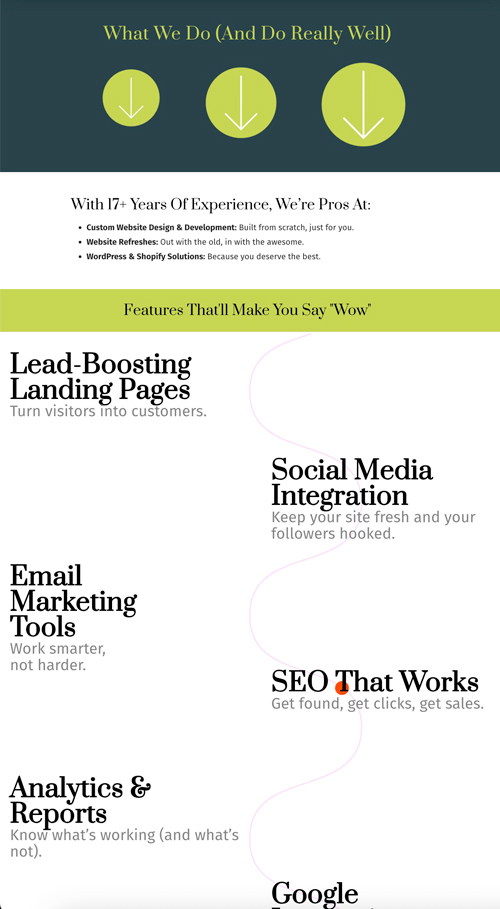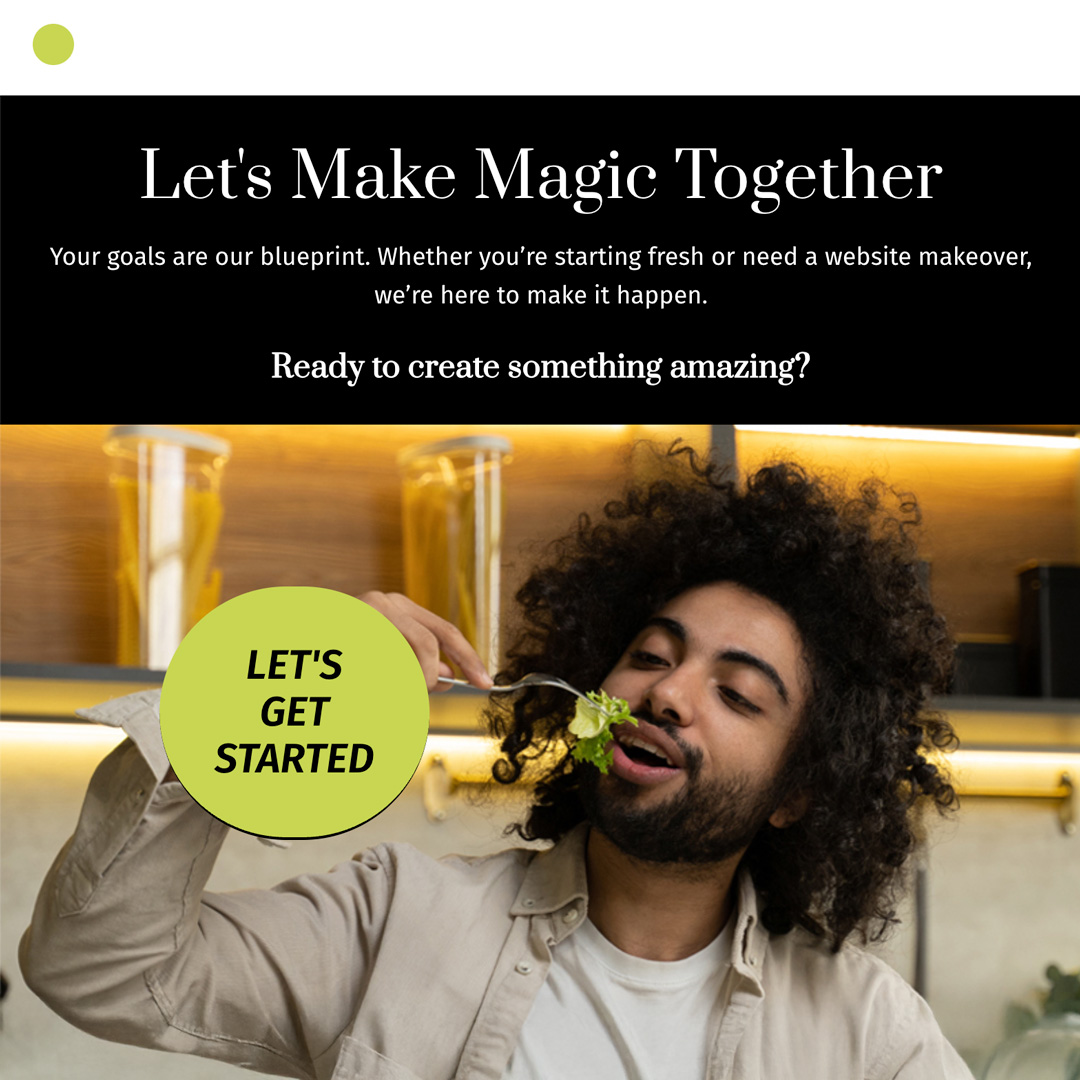Picture This:
This decision can make or break your campaign’s success. We’ve seen businesses waste thousands of dollars sending ad traffic to the wrong place, and we’ve also witnessed companies triple their conversion rates with a simple redirect. The truth is, where you send your traffic matters just as much as the ad that brings them to you.
In this guide, we’ll break down exactly when to use your homepage versus a dedicated landing page, explore the pros and cons of each approach, and share actionable strategies to help you maximize every dollar of your ad spend. By the end, you’ll know exactly where to send your traffic for the best results.
The Case for Landing Pages: When Focus Wins

Landing pages are the workhorses of digital advertising. Unlike your homepage, which serves multiple audiences and purposes, a landing page has one job: convert visitors who clicked on a specific ad.
Why landing pages often outperform homepages:
Message match is everything. When someone clicks your ad promising “20% off kitchen appliances,” they expect to land somewhere that delivers on that promise immediately. A dedicated landing page can pick up exactly where your ad left off, maintaining the same language, offer, and visual elements. Your homepage, on the other hand, might mention kitchen appliances somewhere in the mix, but it’s competing with dozens of other messages.
Fewer distractions mean higher conversions. Your homepage has navigation menus, footer links, blog previews, and multiple calls-to-action. While this works great for organic visitors who want to explore, it’s kryptonite for paid traffic. Landing pages strip away everything except what matters: your offer and the next step you want visitors to take.
Better tracking and optimization. With a landing page, every visitor comes from your ad campaign. This makes it incredibly easy to track performance, run A/B tests, and optimize for better results. You’ll know exactly which headlines, images, or form fields drive the most conversions.
Higher Quality Scores in Google Ads. Google rewards advertisers who create relevant, focused experiences. When your ad, keywords, and landing page all align perfectly, Google notices. Higher Quality Scores mean lower costs per click and better ad positions.
When to choose landing pages:
- Promoting a specific product, service, or offer
- Running time-sensitive campaigns (sales, events, launches)
- Targeting audiences with high commercial intent (SEE Eat Parma!)
- Testing new messaging or positioning
- Driving leads for B2B services
The numbers don’t lie. We’ve helped clients see conversion rate improvements of 200-300% simply by switching from homepage to landing page traffic. One client selling online courses went from a 2.3% conversion rate on their homepage to 7.8% on a focused landing page—same traffic, same offer, completely different results.
The Homepage Advantage: When Broad Appeal Works
Before we completely write off homepages, let’s give credit where it’s due. There are scenarios where your homepage is the better choice for ad traffic, and understanding these situations can save you time and money.
When homepages make sense:
Brand awareness campaigns. If your goal is to introduce people to your brand rather than drive immediate conversions, your homepage tells your complete story. It showcases your full range of products or services, builds credibility through testimonials and case studies, and gives visitors multiple ways to engage with your business.
Retargeting website visitors. People who have already visited your site understand your brand and offerings. When retargeting these warm audiences, sending them back to your homepage can be effective since they’re more likely to browse and explore multiple pages.
Local businesses with diverse offerings. A restaurant, salon, or multi-service contractor might benefit from homepage traffic because local customers often want to see everything available. Your homepage can showcase your full menu, service list, or portfolio in one place.
Budget constraints. Creating and maintaining multiple landing pages takes time and resources. If you’re just starting out or have limited bandwidth, optimizing your homepage for ad traffic might be the practical choice. Just make sure your homepage clearly communicates your value proposition above the fold.
Strong homepage conversion rates. Some businesses have invested heavily in homepage optimization and see solid conversion rates from paid traffic. If your homepage is already converting well, you might not need the additional complexity of landing pages.
The hybrid approach: Some savvy marketers use their homepage strategically by creating specific entry points for ad traffic. This might mean adding a special banner for ad visitors, using URL parameters to customize the experience, or highlighting relevant sections based on the traffic source.
We worked with a local HVAC company that initially insisted on sending all ad traffic to their homepage. While we eventually convinced them to test landing pages for specific services, their homepage actually performed well for their “emergency repair” campaigns because customers needed to see their full range of services, credentials, and 24/7 availability all in one place.
Making the Right Choice: A Strategic Framework
Now that we’ve explored both options, how do you decide what’s right for your specific situation? We’ve developed a framework that helps our clients make this decision based on their goals, audience, and resources.
Start with your campaign objective. Ask yourself: What’s the primary goal of this campaign? If you want immediate action (purchases, sign-ups, downloads), landing pages almost always win. If you’re building brand awareness or nurturing relationships, your homepage might be the better choice.
Consider your audience’s intent level. High-intent keywords like “buy running shoes online” or “emergency plumber near me” work best with focused landing pages. Broader, informational searches might benefit from the comprehensive information your homepage provides.
Evaluate your resources. Creating effective landing pages requires design, copywriting, and ongoing optimization. If you don’t have the bandwidth to do it right, a well-optimized homepage beats a poorly executed landing page every time.
Test, measure, and optimize. The only way to know for certain is to test both approaches. Start with small budget allocations to each option, measure key metrics like cost per conversion and lifetime customer value, then double down on what works.
Think beyond the immediate conversion. Sometimes a landing page generates more leads, but homepage traffic results in higher-value customers or better long-term retention. Make sure you’re measuring the metrics that matter most to your business.
Consider the customer journey. Where does this campaign fit in your overall marketing funnel? Top-of-funnel awareness campaigns might benefit from homepage traffic that lets people explore and learn. Bottom-of-funnel campaigns focused on conversion should almost always use landing pages.
The most successful approach often involves both strategies working together. You might use landing pages for specific product campaigns while directing broader brand campaigns to an optimized homepage. The key is matching your traffic destination to your campaign goals and audience expectations.
Remember, this decision isn’t set in stone. What works today might not work tomorrow as your business evolves, competition changes, or customer preferences shift. The most successful advertisers continuously test and refine their approach based on real performance data.
Conclusion: Your Next Steps to Better Ad Performance
The homepage versus landing page decision doesn’t have to be complicated. Focus on creating the best possible experience for people clicking your ads, and you’ll naturally gravitate toward the right choice.
For most specific campaigns—especially those promoting particular products, services, or offers—dedicated landing pages will outperform your homepage. They provide better message match, fewer distractions, and clearer paths to conversion. But don’t ignore your homepage entirely. For brand awareness campaigns, local businesses, or situations with limited resources, an optimized homepage can be highly effective.
Here’s what we recommend:
Start by auditing your current campaigns. Look at your conversion rates, cost per acquisition, and overall ROI. If you’re sending traffic to your homepage and not seeing the results you want, test a simple landing page for your best-performing campaigns.
If you’re feeling overwhelmed by all these options or want help making the right strategic decisions for your business, we’re here to support you. Together, we can build a digital strategy that maximizes your ad spend and drives real results.
FAQ
Q: Should I always remove navigation from landing pages?
A: Not necessarily. While removing navigation can reduce distractions, some audiences expect it and might feel trapped without it. Test both approaches to see what works best for your specific audience and offer.
Q: How long should I test before deciding between homepage and landing page traffic?
A: Give each approach at least 100 conversions or 30 days of data (whichever comes first) before making decisions. This ensures you have statistically significant results rather than random fluctuations.
At DesignInk Digital, we specialize in creating high-converting landing pages and comprehensive digital strategies that drive real results. Whether you need help deciding where to send your traffic or want to overhaul your entire approach, let’s connect.

